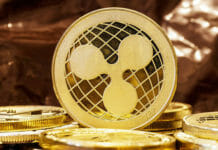The government stops the inorganic monetary issuance, which reduces inflation in Venezuela. A potential agreement between Argentina and the IMF keeps prices in Argentina controlled for the time being.
In February, monthly inflation increased by 4.0% in Argentina and 1.7% in Venezuela. Private consultants provided the data about the former, while the Venezuelan Finance Observatory (OVF) was in charge of the ones about the latter.
Analysts at OJF & Asociados said considerable price increases occurred in Argentina, particularly in transportation, food, and beverages. Those items had monthly variations of 6.3% and 5.5%, respectively.
In Venezuela, prices of communication (16.7%) and services (10%) increased considerably. The reduction in the price of items such as food (-10.5%), alcoholic beverages and tobacco (-6.2%), and miscellaneous goods and services (-5.8%) offset that.
The drop in prices caused Venezuela to drop places in the Latin American inflation ranking in February. However, the South American country should maintain similar figures to stop leading it year on year.
According to OVF data, year-on-year inflation was 246% in Venezuela and 51% in Argentina.
Reasons why the Inflation of Venezuela Falls
There have been five consecutive months of sub-double-digit monthly inflation in Venezuela. In addition, twelve months in a row with inflation below 50% indicates there is no longer hyperinflation.
After the latest monetary reconversion in Venezuela, the State stopped the issuance of inorganic money occurring for several years. Ronald Balza, a university economics professor, explained that hyperinflation in Venezuela went away because the government stopped financing itself with accelerated monetary issuance.
Balza seems to accept the truth of the postulate of Milton Friedman, one of the references to economic liberalism. That American economist, a winner of the Nobel Prize in 1976, said that inflation is always a monetary phenomenon.
Factors that Make Inflation in Argentina Higher than in Venezuela
The above data indicate that Argentine monthly inflation exceeds the Venezuelan one in February. However, there has not been a considerable increase in prices in the former, but a drop in the latter.
An agreement between Argentina and the International Monetary Fund (IMF) has stopped the escalation of inflation and the devaluation of the national fiat currency. However, that arrangement would only extend the payment term, which the next government must handle.
Before the negotiation, Congressman José Espert said that Argentine inflation could reach 100% year on year without agreeing on the debt payment. There could be a tense calm since 4% or 5% monthly inflation could skyrocket to levels not seen in decades.
Bitcoin Offers Citizens Monetary Sovereignty
The Bitcoin ecosystem in both Venezuela and Argentina seems to be constantly growing. The emergence of new exchanges and companies providing services with Bitcoin (BTC) and the growth of groups on social networks prove that.
In Argentina, people use Bitcoin as a hedge against the devaluation of the national fiat currency in the medium and long term.
In Venezuela, the bolívar (VED) remains stable, but the interest from the population in Bitcoin is growing. The cryptocurrency offers protection against the devaluation of the US dollar, slower than that of Latin American currencies. In addition, it provides features such as unseizability and resistance to censorship, which fiat money does not have.
Venezuelan economist Daniel Arraez foresees a turbulent period in terms of regulations in the short run. He believes that the growth of BTC usage could happen underground. The security and control agencies of the State could affect the actors who come forward or promote it.
By Alexander Salazar











